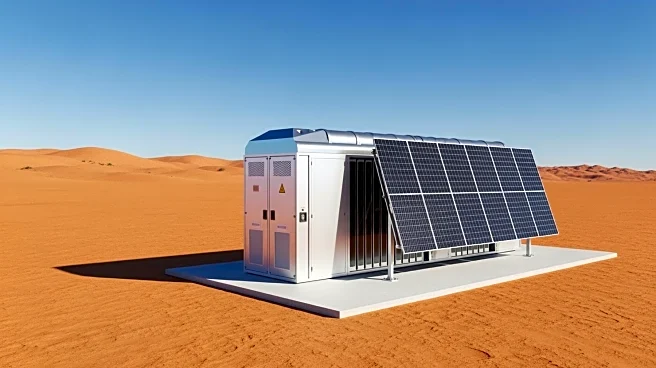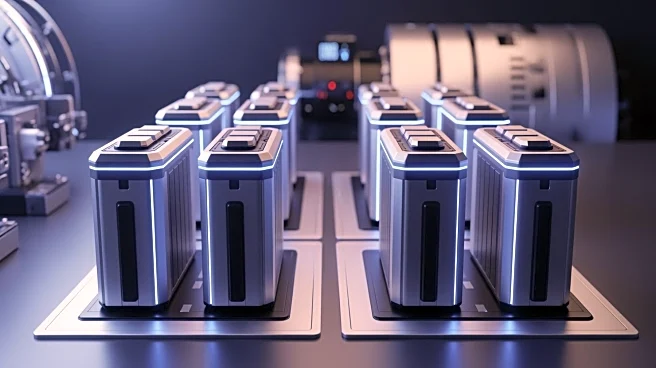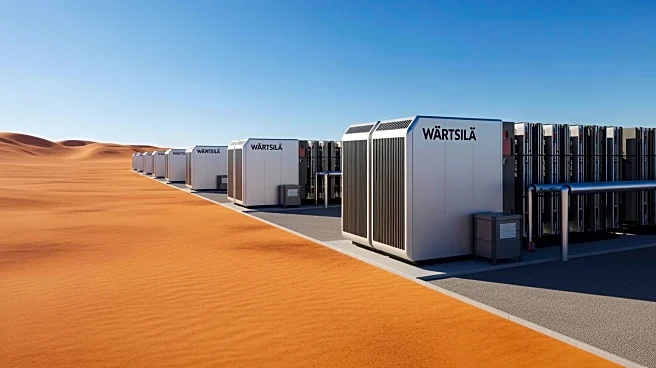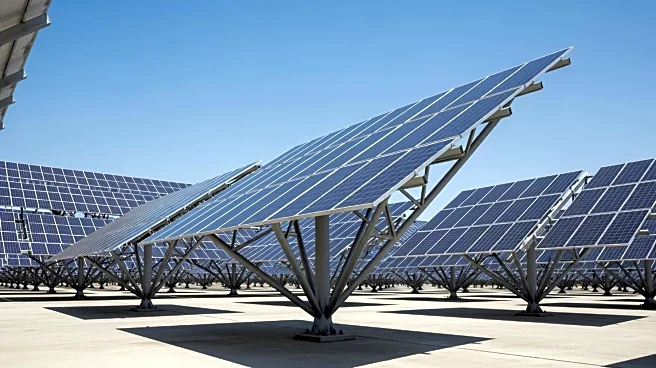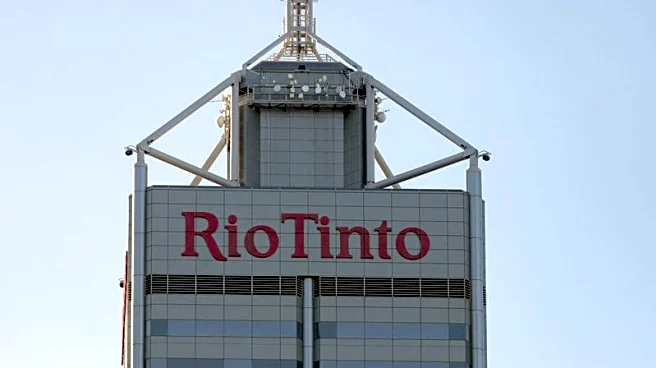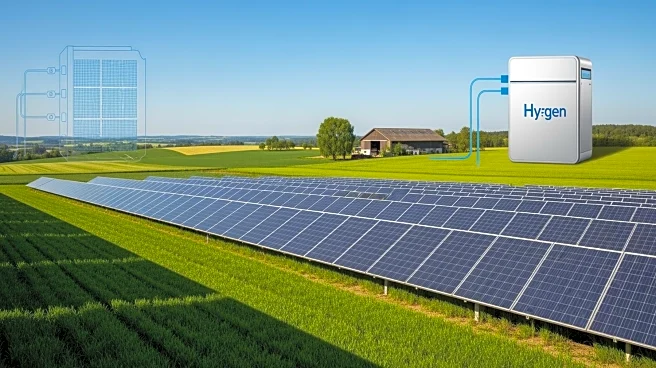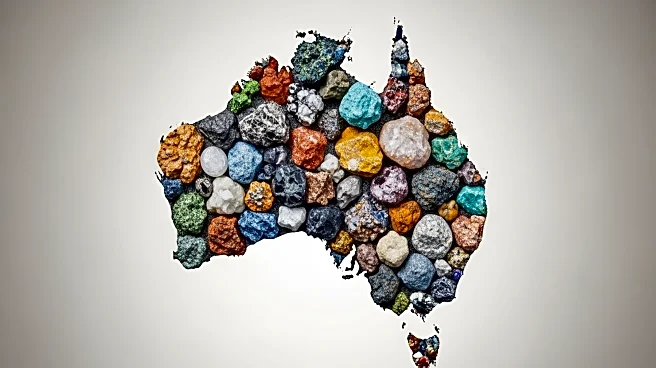What's Happening?
Technology group Wartsila has announced the delivery of the largest DC-coupled hybrid battery energy storage system in Australia's National Electricity Market. This project marks Wartsila's ninth battery energy storage site in the country, expanding its
local capacity to 1.5 GW/5.5 GWh. The system is expected to be operational by 2028 and aims to contribute to Australia's target of net-zero emissions from the energy sector by 2045. The DC-coupled architecture integrates solar generation with battery storage, minimizing energy losses and improving project economics, system efficiency, and grid stability. The project has secured approval for its Generator Performance Standards, a critical milestone for integrating renewable generation and storage at scale.
Why It's Important?
The expansion of hybrid energy storage systems like Wartsila's project is crucial for advancing renewable energy integration and achieving decarbonization goals. By directly coupling solar generation with battery storage, the project enhances the efficiency and stability of the power grid, which is vital for supporting Australia's net-zero emissions target. This development represents a significant step towards establishing a financially viable renewable energy future, showcasing the potential of hybrid renewable energy and storage solutions to stabilize grids and advance environmental objectives. The project also highlights the growing trend of hybridization in energy storage, which could influence future energy policies and investments.
What's Next?
Wartsila's project is supported by a 20-year service agreement, ensuring long-term commitment to the system's operation and maintenance. As the project progresses towards its 2028 operational date, it may set a precedent for similar initiatives in other regions, potentially influencing global energy storage strategies. The successful implementation of this DC-coupled hybrid system could encourage further investments in renewable energy technologies, driving innovation and adoption in the sector. Stakeholders, including policymakers and energy companies, may closely monitor the project's impact on grid stability and emissions reduction, potentially shaping future energy policies.
Beyond the Headlines
The project underscores the importance of technological innovation in achieving environmental goals. Wartsila's intelligent controls and optimization software, GEMS, play a central role in managing the integration of energy storage and solar assets, highlighting the role of advanced technology in optimizing energy management operations. This development may prompt discussions on the ethical and legal dimensions of energy storage and renewable integration, particularly concerning regulatory standards and environmental impact assessments. The project's success could also influence cultural perceptions of renewable energy, promoting broader acceptance and support for sustainable practices.
